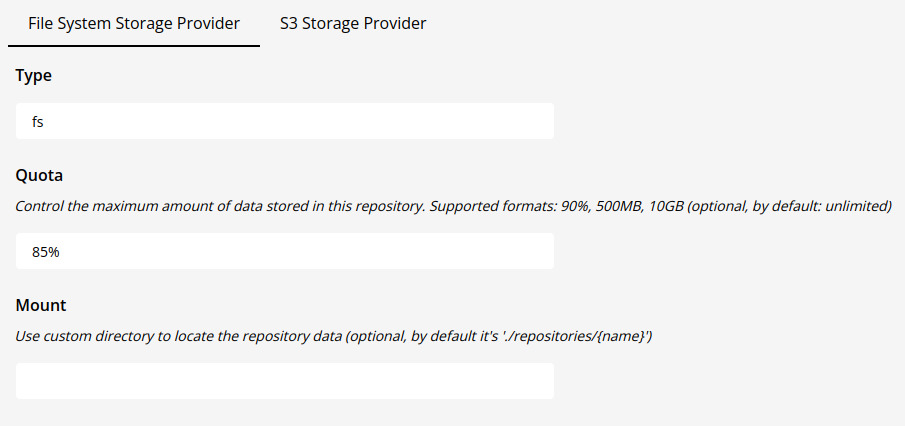Table of Contents
Our projects often use various repositories.
To simplify & speed up your build process,
you can list all of these repositories in
Mirrored repositories section
and Reposilite will also search for requested artifacts among them:
Note: Remember about increasing disk quota!
Caching may allocate thousands of artifacts, especially at the beginning - for the first few builds.
Each proxied repository has individual configuration that can be adjusted to your needs:
The link property can handle 2 types of values:
- URL - direct link to remote repository, for example:
https://repo.maven.apache.org/maven2/ - Local ID - ID of another local repository, for example:
releases
By default, proxied artifacts are not stored in the repository.
If you want to improve response time or availability,
you can enable storing artifacts in the local repository.
You can configure the storage policy of proxied artifacts.
| Name | Description |
|---|---|
| PRIORITIZE_UPSTREAM_METADATA | (Default) Try to fetch the latest version of the artifact from the remote repository |
| STRICT | Prioritize cached version over upstream metadata (full offline mode) |
Note: This property can be only set for a whole repository.
You can limit the scope of proxied artifacts by specifying list of allowed groups, e.g.:
org.reposilite
If the list is empty, all groups are allowed.
You can limit the scope of proxied artifacts by specifying list of allowed extensions.
By default, Reposilite allows these extensions:
.jar.war.xml.pom.module.asc.md5.sha1.sha256.sha512
If your repository requests remote repository that is often unable to respond in time,
you can increase the timeout value to prevent such issues.
| Name | Description | Default |
|---|---|---|
| Connect | Time required to establish a connection | 3s |
| Read | How long Reposilite can read the data from remote host | 15s |
Mirrored proxy may require authentication to access the repository.
Reposilite supports 3 types of authentication:
Basic authentication is the simplest method to authenticate the user.
It requires username and password to access the repository.
Login: Admin
Password: Secret
Some repositories may require authentication via a custom header & some kind of API key.
You can configure Reposilite to use such authentication by specifying header name and value:
Login: X-Api-Key
Password: Token
Since Reposilite 3.4.x,
private local repositories requires dedicated authentication as well.
This enhanced security layer prevents accidental access to private repositories.
If you want to proxy private local repository to another local repository (public or private),
you should generate a new token that has access to the proxied repository (requires read permission):
Login: reposilite-proxy-token
Password: secret
Reposilite supports 2 type of proxies:
- HTTP, for instance:
HTTP 127.0.0.1:1081
- SOCKS, e.g.:
SOCKS 127.0.0.1:1080 login password
Did you find misleading or deprecated content? Maybe you just feel this section misses important elements?
Copyright © 2023 dzikoysk with ❤ panda-lang
